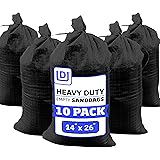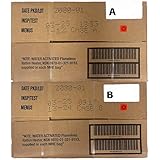Assessing the Flood Risk
Understand Your Local Environment
Before diving into building anything, it’s crucial to take a step back and really understand the lay of the land. This means studying the historical data on flooding in your area. Trust me, I’ve stood in my yard, notebook in hand, scribbling down notes from neighbors who’ve lived here longer than I have. They often know things about rainfall patterns that aren’t readily available online.
Don’t just stop at the obvious flood zones. Even places that seem safe can become riskier with changes in weather patterns. Meeting with local authorities or checking the latest flood maps can shed light on potential issues. It’s all about being prepared!
Lastly, pay attention to the drainage systems in your area. If they’re clogged or poorly maintained, that could spell disaster for your home when the rain comes pouring down. Understanding these factors is step one in building an effective flood barrier.
Evaluate Your Property’s Vulnerabilities
Once you’ve assessed the flood risk, it’s time to turn that focus inward to your property. Walk around and identify low spots where water tends to pool or where water can easily enter. I remember my first inspection; I found spots that, to my surprise, I had never considered during heavy storms!
Also, take note of any nearby structures, trees, or landscaping that might affect water runoff. They could either help or hinder your barrier efforts. In my case, I had to relocate a few potted plants that were at risk of becoming unintended water collectors.
A thorough assessment will give you a clearer picture of the specific vulnerabilities that your flood barrier needs to address. It’s like being a detective—don’t skip the details!
Consult Experts
Don’t let pride get in your way! Engaging with experts can save you a heap of trouble. Whether it’s a civil engineer, a local contractor, or a flood mitigation specialist, their insights can be invaluable. I reached out to a friend who’s a contractor and learned things I hadn’t even thought of, like soil composition and its role in drainage.
When consulting with these folks, don’t hesitate to ask questions! Their knowledge can make sure you’re on the right track and not wasting your time and resources. Plus, they can help pinpoint what materials might work best for your specific situation.
== > What if ... Get a FREE Subscription to PREPARE
In short, expert advice is a game changer! This step can truly illuminate potential pitfalls ahead—so don’t ignore it.
Designing Your Flood Barrier
Choose the Right Type of Barrier
There are different types of flood barriers out there: levees, flood walls, and even temporary solutions like sandbags. Each option has its pros and cons. For me, I had to weigh my options seriously based on cost, effectiveness, and how it would look in my yard. A concrete wall might work, but would it fit with my garden aesthetics?
Learn about how each barrier type interacts with natural water flow. Some barriers can inadvertently redirect water, creating new issues. It’s like working on a puzzle—you want to make sure all the pieces fit together nicely!
Ultimately, the type of barrier you choose should reflect both your budget and your property’s unique needs. I spent hours researching before settling on a hybrid solution that provided both aesthetic value and functionality.
Plan for Maintenance
Building the barrier is only half the battle; maintaining it is just as essential! After all, nature is relentless. Regular inspections should become part of your routine, especially after heavy rainfall. I like to do a simple walk-around once a month—nothing too fancy, just a visual check to ensure everything is intact.
Weathering can damage barriers over time, especially with heavy rains and strong winds. So, don’t overlook it. Sometimes, minor tweaks can lead to major improvements in effectiveness. I remember repairing some loose stones from my wall, and it honestly made a world of difference.
Documenting your maintenance schedule and any repairs needed can save you headaches down the line. It’s a lot easier to manage when you have a record to refer to.
Incorporate Natural Barriers
Don’t forget nature itself can help! Incorporating natural barriers like trees and shrubs is both environmentally friendly and effective. They can help absorb rainwater and reduce runoff. I’ve planted a few strategic bushes, and they not only add to my garden’s beauty but also significantly cut down on the water pooling in my yard.
Additionally, rain gardens—those lovely beds specifically designed to absorb rainwater—can be a fantastic addition. They look great, attract pollinators, and manage water better than I ever imagined. I absolutely love the blooms in spring!
Working with nature rather than against it often yields the best results. It’s all about finding balance and harmony. You’d be surprised at how much a little greenery can add to your flood barrier’s effectiveness.
Building the Barrier
Site Preparation
So, you’ve done your research and picked your design. Now it’s time to get your hands dirty with site preparation! This is arguably one of the most crucial steps. You need to clear the area of any debris, grass, or plants that might interfere with the construction. I found it helpful to use landscaping fabric to ensure weeds wouldn’t ruin my hard work later on.
Ensure you have good drainage by slightly sloping the barrier away from your structures. This minor detail can have a colossal impact on the barrier’s effectiveness. I’ve seen firsthand what happens when water is directed toward rather than away from the house—it’s not pretty!
Finally, ensure your tools and materials are ready to go. Having everything prepped makes the actual building process smoother. Trust me; this step saves you time and stress during construction.
Get Preparedness and Self-Reliance Tips. Subscribe Now!
Construction Techniques
Now we’re cooking! Depending on the barrier type you’ve chosen, follow the right construction techniques. For example, if you’re building a sandbag barrier, make sure each bag is filled consistently and stacked securely to create a solid wall. I made the mistake of stacking them too loosely during my first build, and let me tell you, it didn’t take long for water to seep through.
For more permanent structures like concrete or timber barriers, follow manufacturer instructions carefully. Don’t skip steps—everything matters, from the foundation depth to the finishing touches. It’s worth taking the extra time to ensure everything is just right.
Remember to keep it neat! A well-constructed barrier not only performs better but also looks nicer. This is your property after all; you want it to feel inviting rather than like a fortress!
Final Inspections
Once you’ve completed the build, do thorough inspections before calling it a day! Check for any weak points or places that might need reinforcing. I like to walk along the barrier, tapping on it gently to listen for hollow spots—it’s a quick and effective way to spot issues.
Consider adding some finishing touches like decorative rocks or plants to blend the barrier with your landscaping. It’ll be so much more inviting than an abrupt wall of sandbags! I added a few flowers at the base of my barrier, and it makes all the difference on sunny days.
Ultimately, this final inspection can give you peace of mind before storms hit. A little attention to detail can prevent a major headache during flood season!
Preparing for Emergency Situations
Develop an Action Plan
No one likes to think about disasters, but let’s be real—it’s essential to have a plan in place. Sit down and outline clear steps for you and your family to follow if a flood is imminent. I made a checklist of things to grab, paths to take, and even who would be responsible for what. Communication is key!
Reviewing this plan regularly keeps it fresh in your minds. I even conduct little drills with my family. It might seem silly, but if push comes to shove, you’ll be glad you practiced. It’s one of those “better safe than sorry” deals!
Lastly, make sure everyone is on the same page about where to meet in case of an emergency. Having a designated spot can alleviate panic and confusion. Believe me; you don’t want chaos in the heat of a moment.
Stay Informed
Keep an ear out for weather updates and community alerts. I can’t stress enough how important it is to stay informed not just when storms are brewing, but regularly. Your local news, weather apps, and community notices will give you insights. I personally love having a few reliable apps on my phone for instant alerts.
Networking with neighbors can also provide crucial information—don’t underestimate the power of community! Sometimes, they’ll catch something you may have missed, like rising water levels or approaching storms.
And don’t forget to check your plans against local resources! Often the community has tools and support available for emergencies. Knowing these can make all the difference when time is of the essence.
Equip Your Home
Make sure to equip your home with items like sandbags, waterproof bins for important belongings, and emergency kits. I remember stocking up on supplies one summer, and it felt so much better to know we had things ready if the worst happened.
Being prepared means less panic and more action. You can even educate your family about what to do when the alert goes out, ensuring everyone knows their roles. This alleviates stress and can save valuable time during an emergency.
After all, when the clouds roll in and the winds start picking up, you want to focus on your safety and your family—not scrambling to gather supplies last minute!
Frequently Asked Questions
1. What is the first step in building a flood barrier?
The first step is assessing your flood risk. You should evaluate local historical data on flooding, understand your property’s vulnerabilities, and consult with experts for the best strategies tailored to your specific situation.
2. How often should I maintain my flood barrier?
Regular inspections should ideally occur monthly, especially after heavy rainfall. This ensures that you can catch any issues before they become bigger problems.
3. Can natural barriers help with flood prevention?
Absolutely! Incorporating trees, shrubs, and rain gardens can absorb water and reduce runoff, complementing your manmade flood barrier effectively.
4. What materials are recommended for building a flood barrier?
Materials vary based on the type of barrier you’re building. Common options include sandbags, concrete, timber, and other natural materials tailored to the needs of your specific property and budget.
5. How can I keep my family safe during a flood?
Having an action plan that outlines steps to take in an emergency, staying informed about weather updates, and having your home equipped with supplies can significantly enhance safety during a flood.






